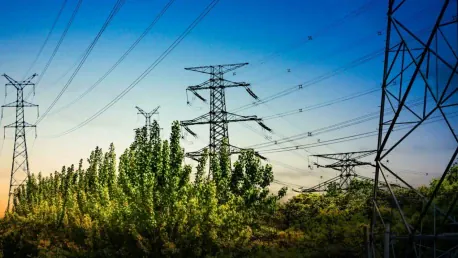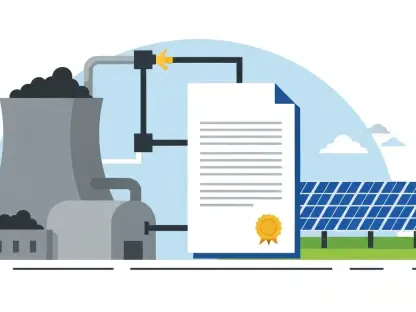The US electrical industry is at a pivotal moment, facing both challenges and opportunities. With rising demand, federal climate initiatives, and increasing electricity costs, utilities must adapt. Leveraging federal funding and adopting whole-home demand-side management (DSM) programs can be key strategies for success. Achieving this requires understanding the historical context, current challenges, and the potential offered by recent legislation such as the Inflation Reduction Act (IRA).
Historical Context and Present-Day Challenges
The Evolution of Electrical Demand
A century ago, as the United States was rapidly electrifying, utilities and state agencies collaborated to ensure consistent and affordable electrical service to consumers. This partnership resulted in a significant rise in electricity consumption, from 5.9 million kWh in 1907 to 75.4 million kWh in 1927, while per-unit costs declined by 55%. Today, utilities are facing a similar scenario with modern advancements; the rise of artificial intelligence, increased domestic manufacturing, and electrification trends. The Department of Energy (DOE) predicts a 15-20% surge in electrical demand over the next decade. This anticipated increase follows two decades of relatively stagnant demand and requires utilities to adapt quickly to meet the new expectations efficiently.
The rapid advancements in technology and energy needs aren’t the only aspects putting pressure on utilities. With increased demands come heightened expectations for reliable service delivery, creating a level of complexity unseen in previous eras of industrial growth. Moreover, considering the dual challenge of meeting increased demand and complying with climate-friendly policies, utilities must pivot quickly towards innovative strategies that facilitate efficient energy distribution, cost management, and sustainability. The similarities to past challenges provide a historical blueprint, but the modern landscape demands more robust, tech-driven solutions.
Federal Climate Goals and Financial Strain on Customers
The Biden administration’s ambitious climate goals aim to significantly decrease the nation’s greenhouse gas emissions. These targets include reducing emissions by 50-52% below 2005 levels by 2030, achieving 100% carbon pollution-free electricity by 2035, and creating a net-zero emissions economy by 2050. While these goals are crucial for combating climate change, they introduce new complexities for utilities already struggling to keep up with demand. Alongside these challenges, residential customers are experiencing financial pressure due to rising electricity bills.
The Energy Information Administration projects that household electricity bills will continue to rise, with electric rates increasing by an average of 2% in 2024, following a 6% rise in 2023. The economic strain on consumers necessitates innovative utility programs designed to mitigate costs. Therefore, utilities must balance the immediate needs for affordable energy and longer-term climate goals, implementing forward-thinking initiatives that seamlessly marry economic relief for consumers with sustainable practices. Failure to address these dueling imperatives could result in a strained relationship between utilities and their customer base, potentially hindering progress on broader climate objectives.
The Role of the Inflation Reduction Act
Opportunities for Utilities
The Inflation Reduction Act (IRA) opens a new chapter of possibilities for utilities across the country. With nearly $400 billion allocated to support clean energy and combat climate change, this landmark legislation provides substantial funds that utilities can harness to transform their services. Among the key components of the IRA are the Home Efficiency Rebates (HER) and Home Electrification and Appliance Rebates (HEAR) programs. These programs aim to assist American households in undertaking home improvement projects that lead to lower energy bills and reduced carbon emissions. The Department of Energy (DOE) estimates these rebates will save households up to $1 billion annually on energy bills while supporting over 50,000 U.S. jobs.
For utilities, this wave of federal funding represents a strategic opportunity to expand their DSM programs and align with broader federal climate goals. By integrating these rebates into existing programs, utilities can promote comprehensive energy efficiency improvements, electrify essential household appliances, and shift electrical loads effectively. The foresight to leverage IRA-provided incentives could significantly ease the financial burden on both utilities and consumers, ultimately laying the groundwork for more sustainable energy use practices. These opportunities underscore the necessity for utilities to adopt a proactive, innovative approach to program implementation.
Aligning with State Agencies
Before utilities can fully implement HER and HEAR programs, State Energy Offices (SEOs) must apply for the necessary funding and outline how they intend to deploy the allocated resources. These programs specifically target low- and moderate-income customers, prioritizing electrification retrofits that would otherwise be financially unattainable. Utilities now have a critical window to align their residential DSM energy auditing requirements, measures, and eligibility calculations with HER and HEAR stipulations. Such alignment not only helps utilities tap into available IRA funding but also ensures a higher rate of customer participation and satisfaction.
Efforts to synchronize utility protocols with state agency programs can greatly amplify the impact of allocated federal funds, streamlining the process for households to participate in electrification projects. This collaboration can play a transformative role in modernizing the electrical grid infrastructure. Additionally, it ensures an equitable distribution of resources, targeting those most affected by rising energy costs. Through meticulous planning and alignment with state programs, utilities can serve as conduits for transformative energy practices. This integrated approach is essential for a seamless transition towards a more energy-efficient and resilient grid.
Evolving Residential Programs
Transitioning to Whole-Home Decarbonization
Utilities can no longer rely solely on legacy direct install-based residential programs; the focus must shift towards holistic whole-home decarbonization programs. Such programs encompass rewarding customers for actions that reduce energy waste, electrify appliances, and shift electrical loads to lower peak demand and carbon emissions. This transition presents numerous advantages, as DSM programs that consider the entire home as a system are inherently more efficient and impactful. By incentivizing comprehensive decarbonization measures, utilities can assist customers in significantly reducing their electric bills and minimizing greenhouse gas emissions.
Furthermore, the whole-home decarbonization paradigm delineates a strategic shift from isolated energy efficiency rebates and direct install programs. By examining the house as an interconnected energy ecosystem, these programs ensure more effective load management and carbon footprint reduction. These progressive programs not only provide immediate financial benefits to program participants but also contribute to the broader goal of achieving sustainable and resilient energy systems. The shift towards whole-home DSM underscores the importance of adopting a long-term, integrated view of energy consumption and efficiency.
Stacking and Braiding Funding
A significant advancement for utilities lies in implementing the stacking and braiding funding model, which strategically combines federal and utility-based ratepayer funding. This intelligent approach allows for the expansion of whole-home programs, reducing cost barriers and maximizing impact. Rather than focusing solely on rewarding permanent demand reduction, which has been the hallmark of traditional programs, the whole-home approach adopts a more comprehensive perspective. It analyzes hourly consumption patterns and rewards customers for shifting loads during peak hours.
This multifaceted funding approach generates several benefits. By integrating federal funds with utility programs, a broader customer base can be reached, driving collective progress towards energy efficiency goals. Additionally, this approach provides a clearer roadmap for sustainable load management, paving the way for decreased reliance on high-cost peak-hour generation. The stacking and braiding strategy exemplifies how creative financial solutions can drive operational efficiency and customer engagement, fostering a more sustainable energy consumption culture.
Implementation and Expert Partnerships
Importance of Regional Expertise
For utilities to successfully integrate federal funding and roll out comprehensive DSM programs effectively, partnering with the right implementer is crucial. The ideal partner should possess extensive experience designing, integrating, marketing, and tracking energy efficiency and DSM programs across various U.S. regions. Recognizing that challenges faced by utility grids vary significantly based on geography is vital. Each region’s unique climate, population density, and infrastructure influence energy consumption patterns and DSM program efficacy. Therefore, selecting partners with regional expertise is critical for tailored and successful implementation.
Regional partners bring nuanced understanding of local conditions, ensuring that DSM programs are not just broadly effective but also locally optimized. Such partnerships can address specific regional challenges, from peak demand variations to differing regulatory environments. Ultimately, collaborating with experienced regional implementers ensures that utility programs are relevant, efficient, and aligned with both federal mandates and localized energy needs. This localized approach can lead to greater program acceptance and higher participation rates, bolstering overall effectiveness.
Strategic Collaboration
The US electrical industry is at a critical juncture, navigating through a landscape filled with both hurdles and promising opportunities. As the demand for electricity escalates, federal climate initiatives intensify, and electricity prices rise, utility companies need to adapt swiftly and effectively. Exploiting federal funding and implementing comprehensive whole-home demand-side management (DSM) programs are pivotal strategies for achieving these goals.
However, for these strategies to be effective, it’s essential to grasp the historical backdrop, the current obstacles, and the future possibilities opened up by recent legislation, such as the Inflation Reduction Act (IRA). The IRA aims to drive significant investments toward renewable energy, energy efficiency, and climate resilience, thereby transforming the electrical sector. By understanding these dynamics, utilities can better position themselves to harness the new opportunities and tackle the challenges ahead, ensuring a more sustainable and cost-effective future for the electrical industry in the United States.









